OUTLAND. A must-watch for fans of old-school science fiction
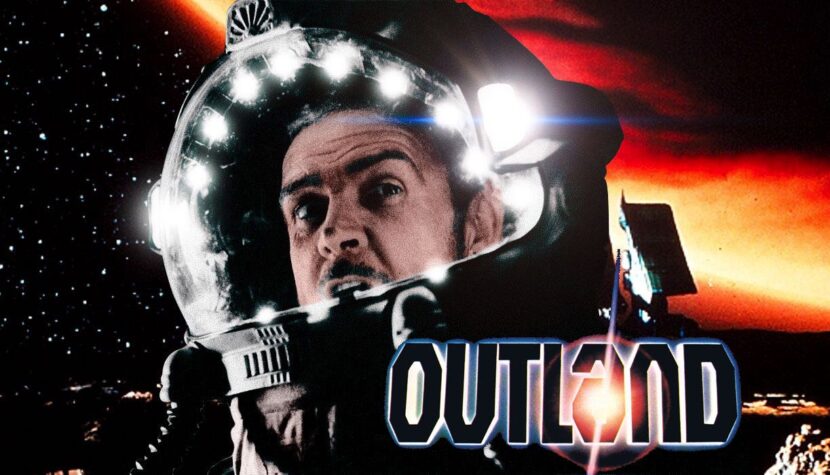
Looking from the perspective of a child of the 80s, something is very wrong here. Just yesterday, the new millennium seemed like a distant future, and the vision of the Y2K bug only troubled the sleep of the most paranoid. And suddenly, wham bam thank you ma’am (and where’s the kiss?), and spring 2014 is approaching! The thought that next year hoverboards will hit the market makes my piggy bank tremble with fear, its little porcelain hooves clattering. “Roads? Where we’re going we don’t need roads,”.
By the way, it turns out that the well-known toy giant, along with the long-awaited futuristic skateboard, is bringing a future cop into the world. Anyone who has seen the RoboCop remake realizes that he’s closer to a toy for three-year-olds (or “to”) than to the deadly machine from Verhoeven’s version. With the screening of the new Robo, it dawned on me that despite the renaissance of science fiction cinema in recent years, it’s increasingly difficult to find films that don’t look like they were pulled from magazines about new technologies, specifically from the “you must have this to be super cool-popular” section. The future, or rather the future worlds in movies, are too cool, too calculated, and too sterile for me. Even if there’s an image of a future that isn’t entirely “user-friendly,” apart from individual cases (Children of Men / Elysium), there’s a significant sense of falsehood in it all. Outland.
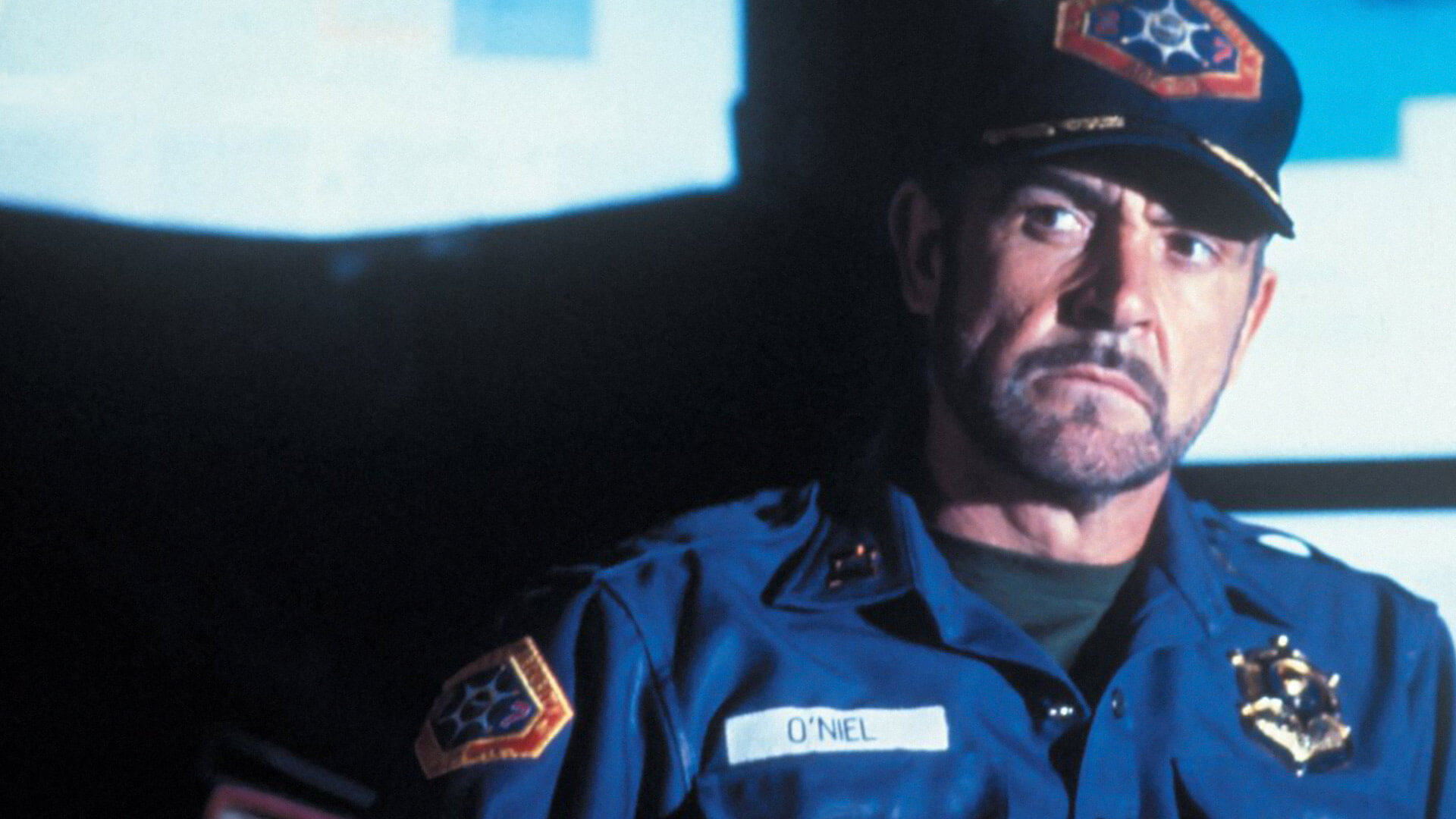
You can throw titles blindly, from I, Robot, through Minority Report, to ending with Oblivion – all in a similar, pulled-from-the-Apple-store style. Maybe it’s just my pipe dream, but wouldn’t the first two titles be much better (with a nightly prayer for Spielberg’s movie) if they took place in a world reminiscent of the stench and squalor of Blade Runner? Neon lights reflecting on wet streets, plumes of steam rising from city sewers, worn-out technology devoid of “designer” falseness… I could go on forever… Let’s not hide it, I’m a simple guy with simple needs, and all the pseudo-technological novelties thrown at us by patent-buying giants are received with a good dose of I don’t care – call me an old romantic, but I prefer the old Nokia 6310i to some colorful gadget with the ability to download apps that supposedly cure cancer.
My brick is a lithium-polymer destroyer, excelling in both business tasks and pacifying local rednecks in bar brawls. This phone is a damn terminator: you can’t negotiate with it, destroy it, or flood it – it knows no mercy and never stops. I guess this technological deviation is in my blood and seems to pass from father to son. My grandfather only accepted electricity in the 80s, previously driving away the sent electrician from the commune with musket salvoes (He’s a witch!!!), and my father changed the TV to a color one a few years ago (when I wanted to watch cartoons in color as a child, I painted Neptune’s TV screen with markers).
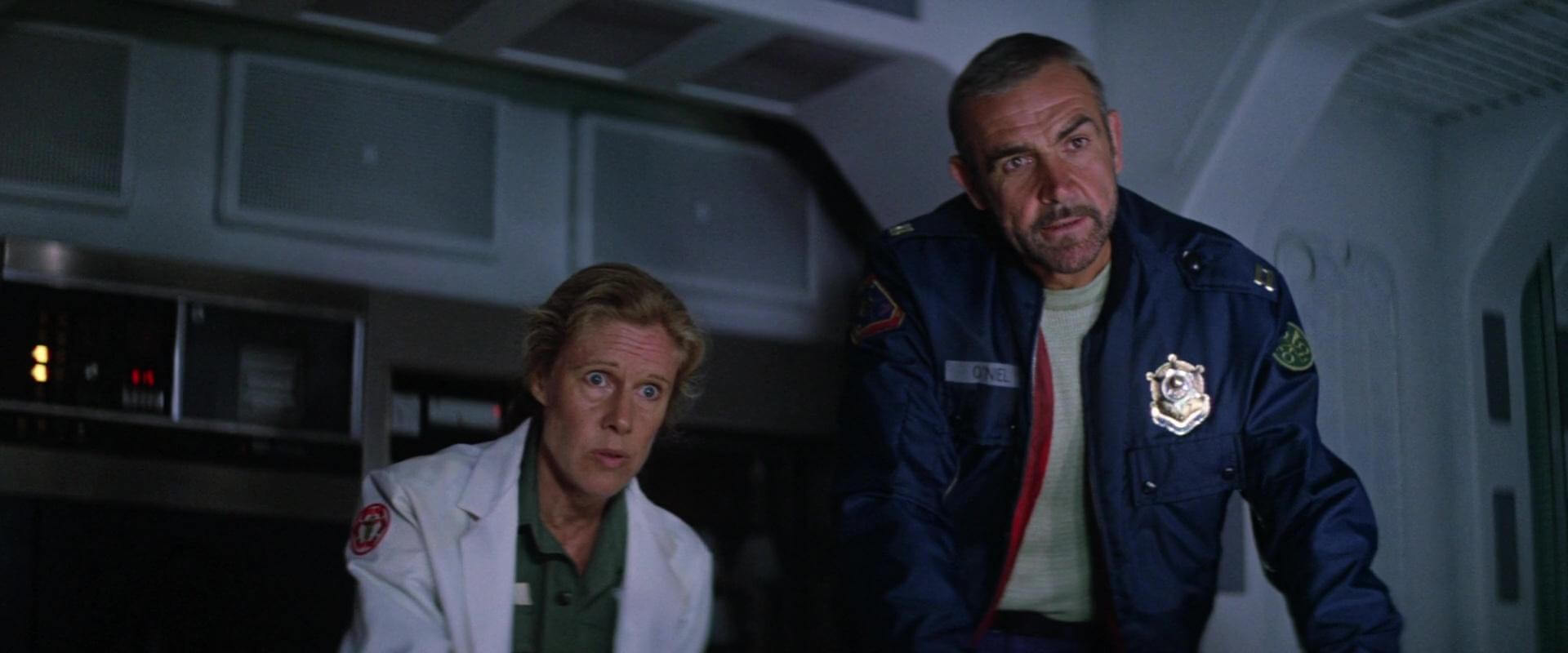
What can I say, I come from a family of Neanderthals, technological monkeys, but on the day when Hitachi entered my home, acting like a monolith giving birth to (technological) consciousness in my household (putting jokes aside, when my father first connected the VCR, the sounds it made and the movements – along with the triumphantly thrown-up remote – didn’t differ greatly from the prologue of a certain classic), starting from the American processing of food (powdered potatoes? “what kind of witchcraft is this?”), and ending with futuristic movie worlds.
Years of watching the same movies over and over have ingrained in me a certain habit of perceiving the future and its technology. A perfect example of what I love is Alien, where the Nostromo is not some intergalactic, Star Trek-like cruiser, but a flying refinery attached to a tug – just a future truck. From the Alien series, through the first two RoboCops, Total Recall, Enemy Mine, to Hardware – the future looks like that for me. Today, of course, everything has turned upside down in the known place, and most SFs look like they came from a brochure at an Apple board meeting. Even if a post-apocalyptic story makes it to the big screen, the characters still look like they were pulled from the spread of Your Style magazine: metallic glasses – check, tight-fitting pants – check, snow-white teeth – check, flips and somersaults on the ceiling with the obligatory landing on “three” – the list goes on endlessly. In the flood of eggless SFs, I treated myself to a significant gift, rediscovering OUTLAND – a heavily dusty classic from the ’80s with Sean Connery on board – because in space no one can hear your Scottish accent. Prometheus? Screw Prometheus, Outland is the spiritual successor to Alien.
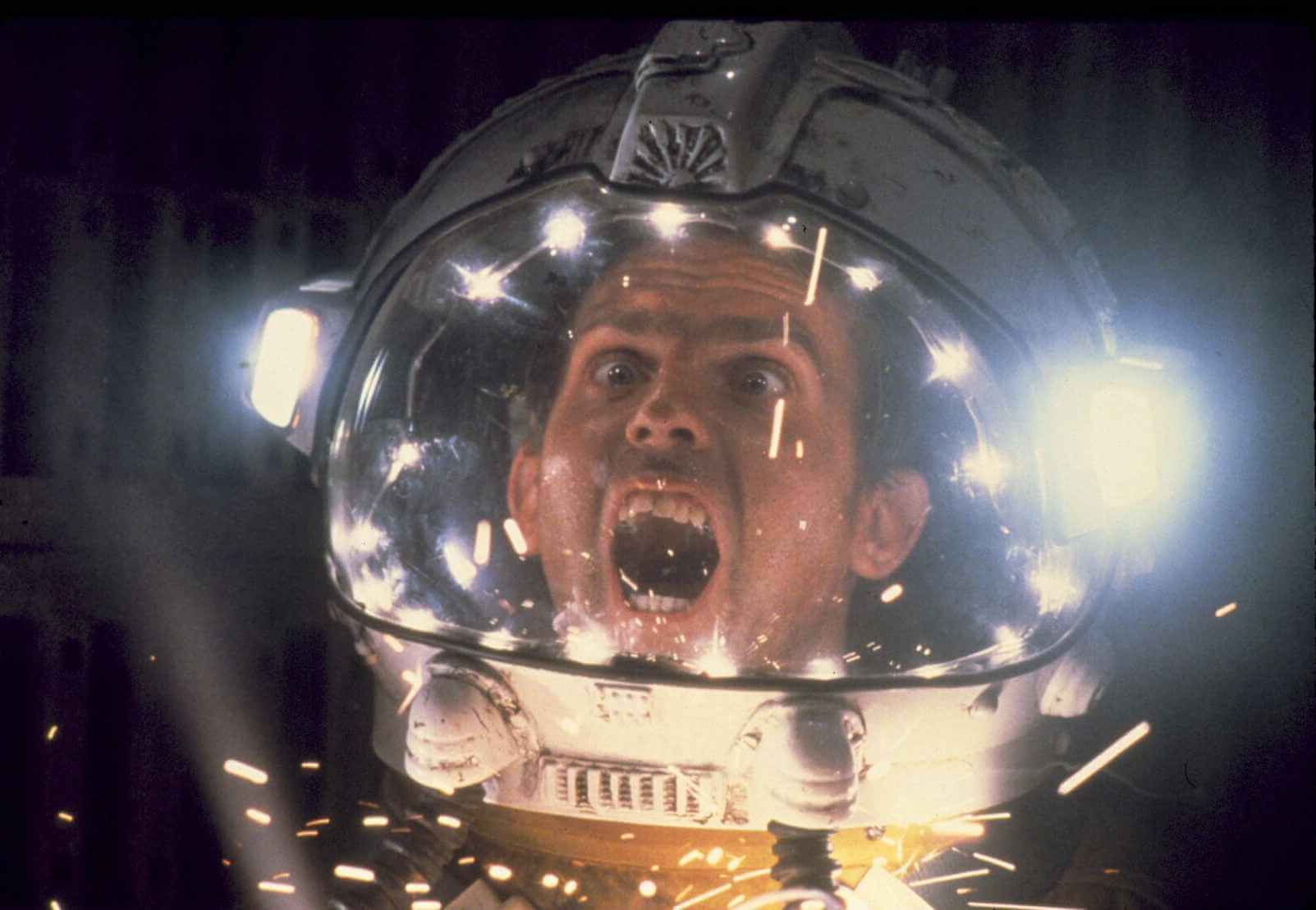
Because Alien is not just a acid-bleeding xenomorph but also seven pissed-off, low-paid, space truck drivers who tow the worn-out Nostromo like a semi-trailer through cosmic backroads. The same goes for Outland: ordinary workers (forget those Star Trek models), somewhere on the edge of the galaxy, dirt, sweat, and a fully functioning world. The similarities in the world’s design are striking (the crew of the Nostromo could transport the refinery from such a colony-mine), but that’s nothing surprising since the film was made at Pinewood, and the same people who took their first steps in the film industry on the set of Alien were involved in its creation. For me, it’s one of the best worlds created for a film. The human base in Avatar, or even the great but limited to a bar and one intersection, the city on Mars in Total Recall, pale in comparison to the extensive infrastructure of Outland.
The plot-driving intrigue is simpler than the favorite move with which the Scottish Bond used to reward his women (known as the “hit your woman when she talks too much” institution). The future, a portable metal mine on Io, one of Jupiter’s moons. A defiant marshal is sent to the isolated, typical mining colony consisting of miners and technical-office support. His task is to maintain order, peace, and the American way of life for the next 12 months. It’s not a demanding job and is assigned as a punishment because Sean rubbed some big shots the wrong way and is sent to the worst places in our galaxy.
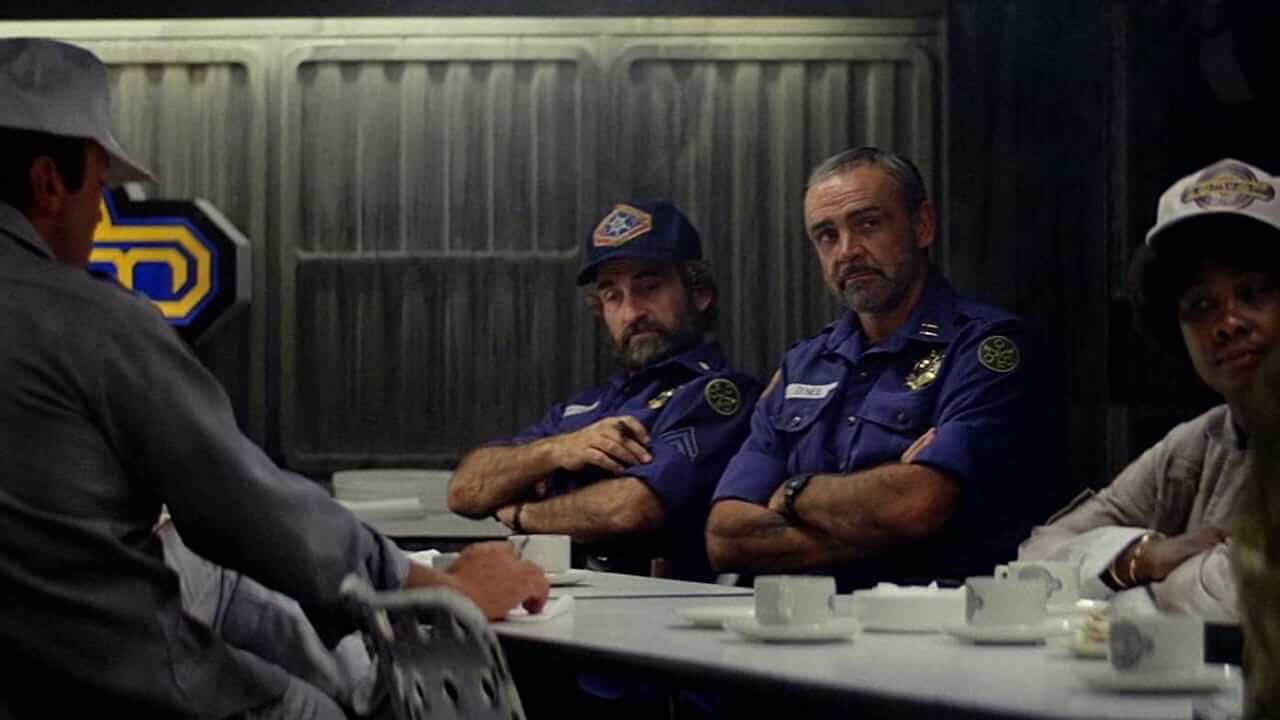
With him is his perpetually nervous wife (“shaken, not stirred!”) and an adopted son. I bet he’s adopted because Sean wouldn’t father such an ordinary brat. After all, we’re talking about the damn Scottish James Bond – having sex with this man is like a battle of Stirling, where orgasm happens accompanied by the cry of Alba gu brath, and his sperm drive an Aston Martin – his son should be born as a grown man in a suit, with a martini in hand and a deck of cards, ready for a round of strip baccarat with a group of nurses.
However, this kid is some crying wimp. Sean probably whispered in his ear every night while giving him a goodnight kiss that he was dropped off by the Pikeys, meaning the (galactic) gypsies. But let’s set aside family matters because Sean is tasked with ensuring that the lives of mine workers (not to mention the flagship and record-breaking facility of the company) pass in harmony and peace. There’s just one problem: with the records in extraction, the suicide rate among the crew is on the rise. You understand, working far from home, enclosed, claustrophobic spaces, lousy coffee, air from the air conditioner – it’s normal for a person to want to shoot themselves occasionally. No, I’m not addressing the rank and file office workers – you know, those guys smelling like a mix of sweat and the photocopier (Xerox – I love the smell of middle-class living on credit in the morning…), to whom Excel gave a rectangular tan.
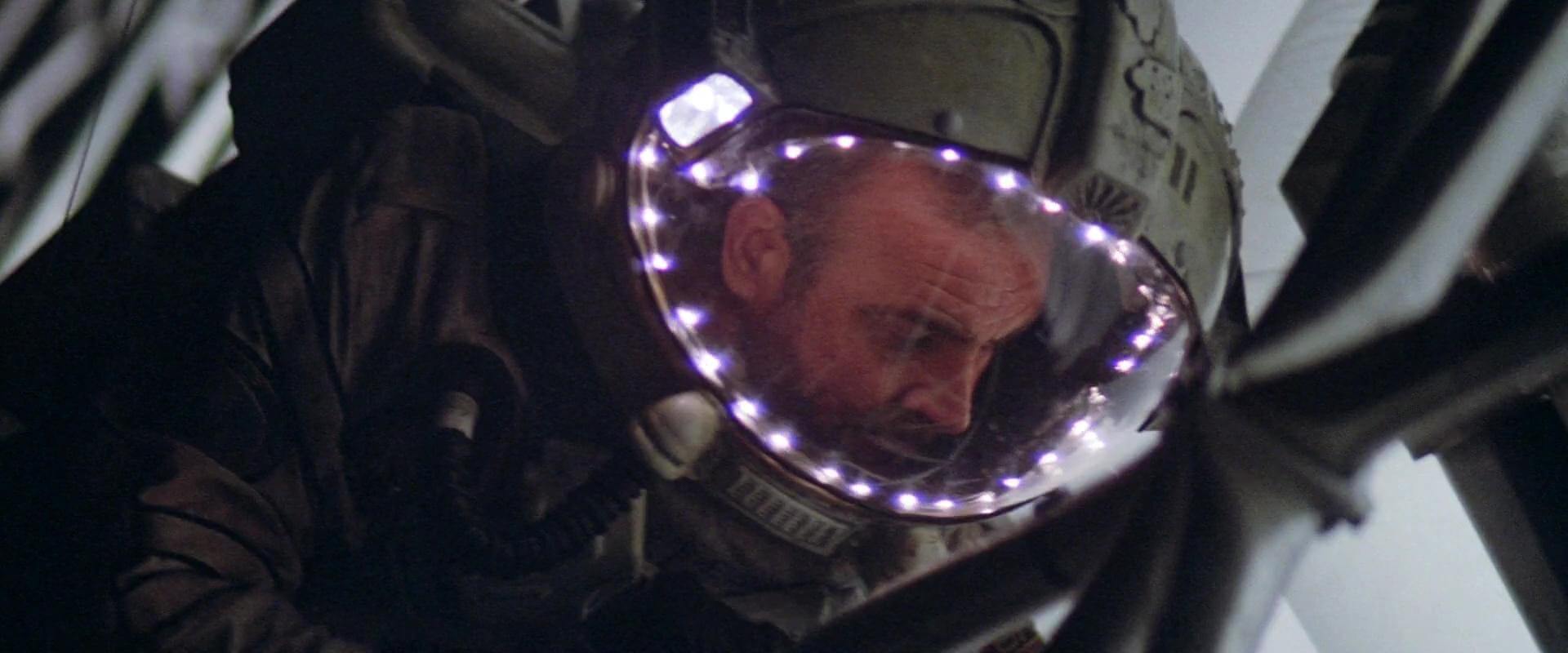
Here, clients drop like flies, and we’re not talking about exhaust fume poisoning in their own garage (recently a guy from my company did it, but he forgot he drives a Toyota Prius – and the whole weekend was spent on this fun, at some point, probably out of boredom, he even brought sandwiches and a TV – the investigators were shocked… these hybrid cars really have economic fuel consumption!), but about dying from innards sucked out through various openings in our bodies, culminating in a spectacularly exploding head – a sight so unpleasant that the classic Scottish haggis looks like a delicacy from a three-star Michelin guide restaurant. Yes, I’ll say it again: I love the ’80s. Beautiful times when animatronics and special effects showed a middle finger to physics, and people exploded in space. Taking advantage of exploding heads and practical special effects… let’s experience it again:
So, Sean is concerned about the increasing number of suicides and quickly gets on the trail of a scandal involving the facility director himself. With his consent, the workers take a new type of synthetic drug, which, along with increasing physical efficiency, turns their brains into pumice. Of course, you can’t expect a shovel operator to have knowledge of Nietzsche, but the trick is that after a few months, the drug blocks the self-preservation instinct and stimulates an irresistible desire to go into outer space without a spacesuit – you don’t have to be a specialist to know that this way, you can get yourself into trouble.
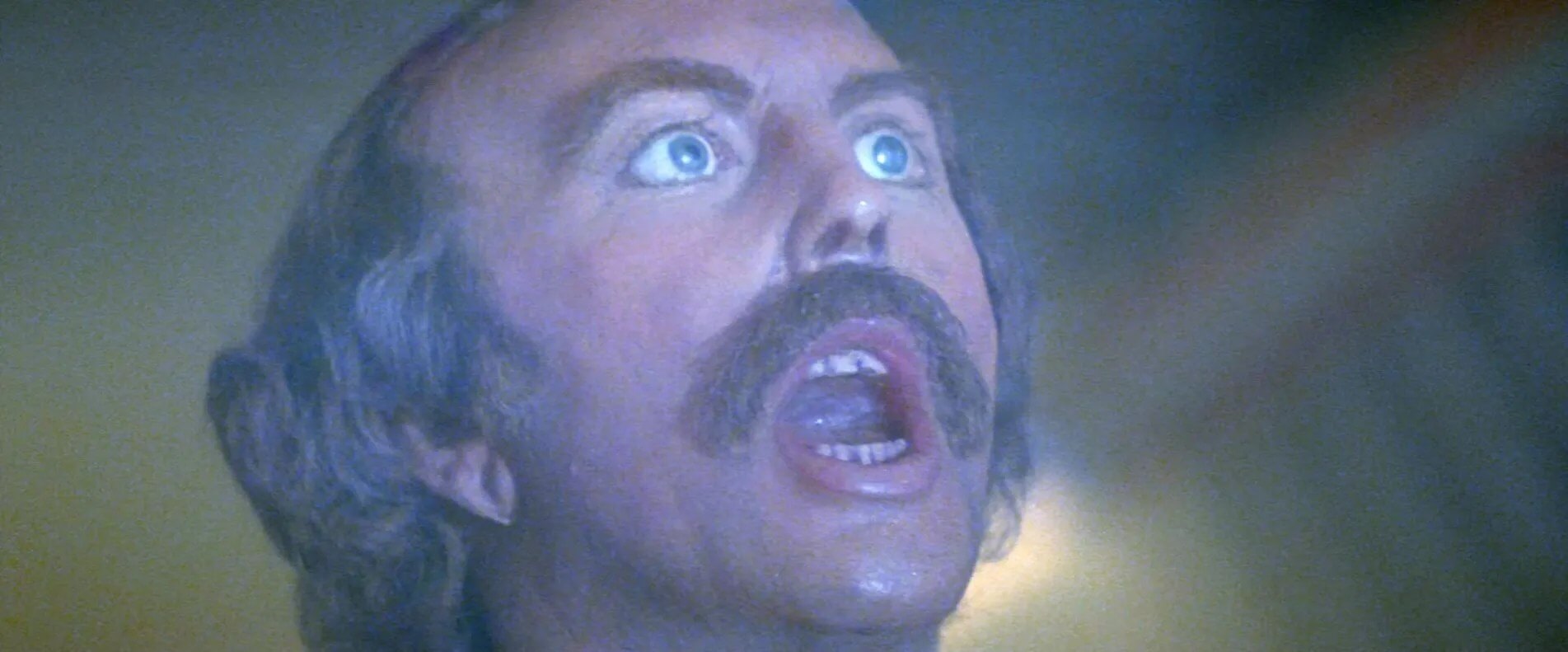
Deeply outraged by the turn of events, the Scottish space sheriff declares war on the drug dealers, while at the same time entering into conflict with the company’s management, who decide to get rid of him by hiring a team of assassins. In short, doesn’t it sound like material for a good space western? Associations with High Noon automatically come to mind, and the film is basically nothing but a space version of the classic western. Don’t get me wrong, on one hand, it’s a bit painful that the entire production infrastructure of Outland went into a film with such a down-to-earth plot; on the other hand, in the era of the success of the first Alien, it’s good that no one dared to try another attempt to cash in on Scott’s film. However, to be funny, for me, Outland is nothing but an unofficial Alien spin-off – a film set in its universe, addressing entirely different issues.
Sean, already past the glory of being Bond but before the success of Highlander and The Untouchables, is good, maybe even too good. The reason? It’s Sean “I’m gonna slap you” Connery, and at times, it’s hard to believe that the guy could come out of all that mess alive. To make sure Sean doesn’t feel lonely, Frances Sternhagen is given to him as a snarky and sassy lady doctor, who could easily be Ellen Ripley’s mother. Acting-wise, Peter Boyle stands out in an unusual role for him as a tough, mob-involved colony director. As befits a classic villain-businessman, the character cannot do without office golf scenes, here in a futuristic version, a wet dream for fans of sports on Nintendo Wii.
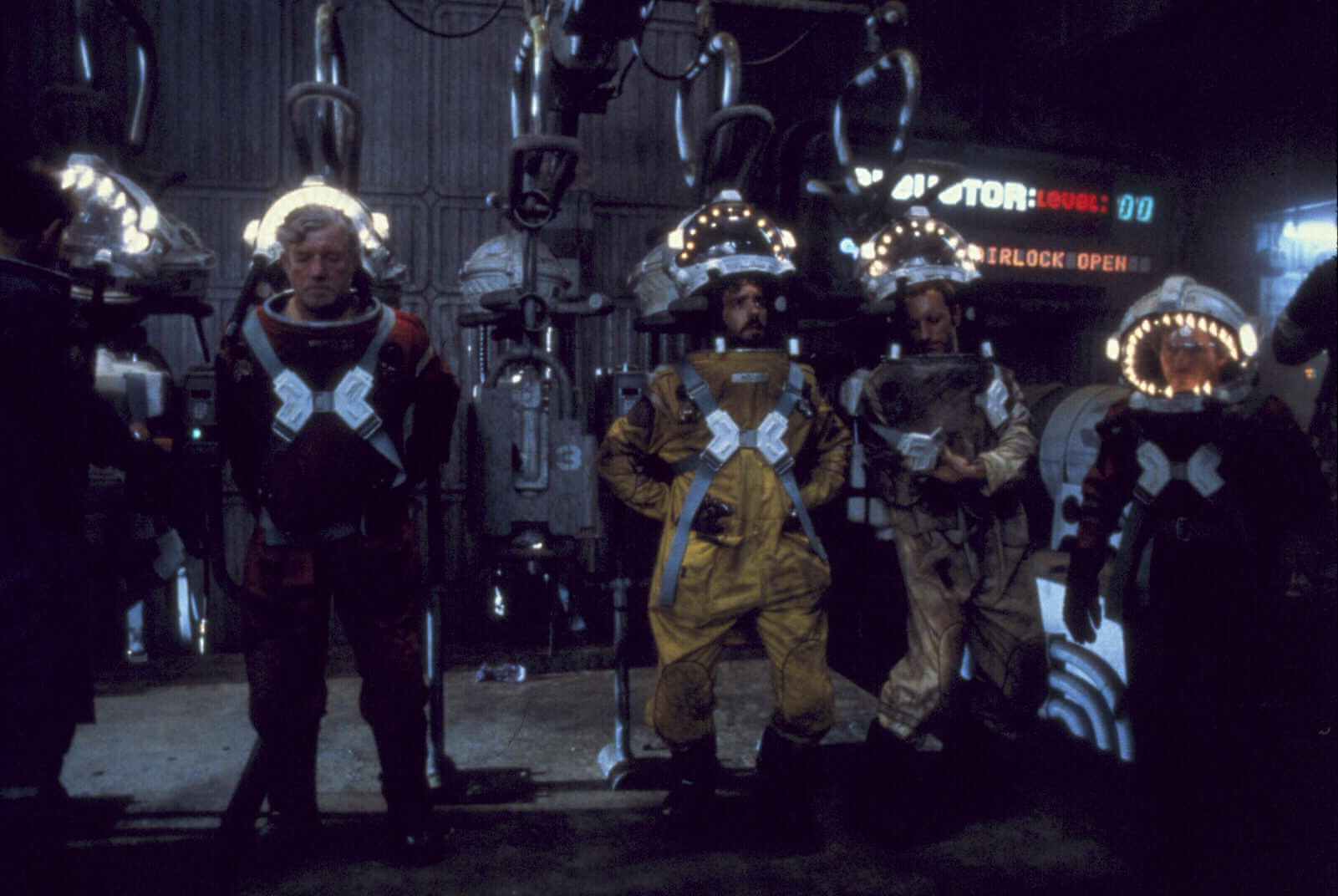
Let’s not kid ourselves, Outland is not some great work or a milestone in sci-fi cinema. Nevertheless, it’s a well-crafted, written, and directed thriller with stunning visual aspects, topped with an exemplary soundtrack by the always reliable Jerry Goldsmith. For fans of old-school science fiction, it’s a must-watch.
By the way, looking at Outland, I wonder what happened to Peter Hyams’ career? The guy was growing into a solid brand in the ’80s, rising as a talented craftsman who would go down in history as a hardworking and inventive filmmaker. Certainly not Stanley Kubrick, just a creator of films for the common people (2010, Capricorn One, anyone?), who will join the ranks of respected Hollywood workhorses, always reliable for a good performance – he will eventually win an Oscar for some biography and earn his place on the Walk of Fame. However, looking at his recent film achievements, one might venture to say that, yes, Hyams is on Hollywood Boulevard, but not as a symbol-star and director of Outland, but as a substitute for Julia Roberts in a certain profession.

